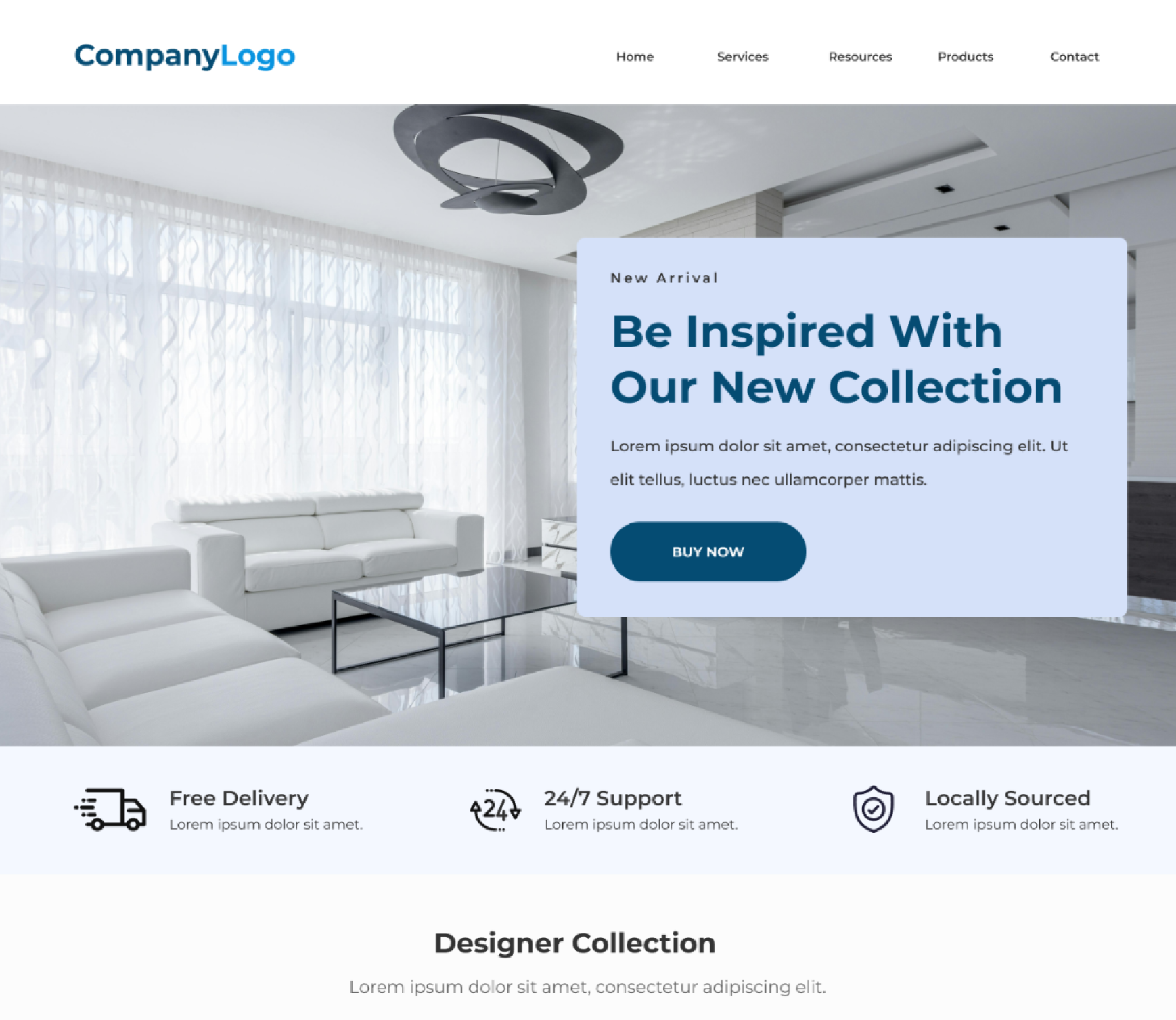Having a well-designed and user-friendly website is crucial for businesses aiming to establish a strong online presence and stay ahead of the competition


In today’s digital landscape, having a well-designed and user-friendly website is crucial for businesses aiming to establish a strong online presence and stay ahead of the competition. A comprehensive website launch checklist is essential for attracting potential customers, showcasing products or services, and building brand credibility.
Launching a website involves careful planning and execution, covering various aspects such as on-page SEO, meta descriptions, keyword research, technical SEO, page speed optimisation, grammar check, XML sitemap, robots.txt, mobile optimisation, meta titles, alt text and an effective content strategy.
This guide will walk you through the essential steps of launching a successful website in 2024. It covers everything from website planning and design to testing, marketing, and post-launch activities. Whether you’re a non-technical entrepreneur or an experienced website maker, this beginner-friendly website launch checklist will equip you with the knowledge and tools to create a visually appealing and user-centric website that delivers exceptional results.

Identifying the primary goal(s) of a website is crucial for its success. Clear goals help create focused and relevant content that attracts and retains visitors. When setting website design goals, it’s important to be clear about what you want to accomplish and why you need the website. Good website goals are SMARTER: Specific, Measurable, Achievable, Relevant, Time-sensitive, Evaluated and Reviewed. Creating a plan to achieve goals involves identifying resources, creating a timeline, assigning responsibility, developing an action plan, prioritising goals, measuring progress and monitoring progress.
A target audience is a group of people most likely to buy your products or services. Identifying your target audience is crucial for your marketing strategy and every aspect of your marketing funnel. Analysing existing customer demographics and conducting interviews can help determine your ideal target audience. Market research and reviewing industry trends can identify gaps in the market. Researching competition provides valuable insights. Building customer personas helps digest market research and audience insights. Tools like Google Analytics, Facebook analytics and SEO tools can provide data about your target audience.

Selecting the right content management system (CMS) is crucial for creating a successful website. [9] A robust CMS can streamline workflows with translators, making it easier to offer content in a language and tone that resonates with your target audience. [9] Additionally, a flexible CMS can help you adapt to rapidly evolving technology.
When choosing a CMS, consider the following critical factors:
Your CMS is the foundation of your content marketing campaign, and choosing the right one is crucial for ensuring your content has the desired impact. [10] Consider involving stakeholders from various departments (IT, marketing, sales) to prioritise requirements and ensure the CMS aligns with your organisation’s needs and infrastructure. [10]
When selecting a website template or theme, consider your industry, goals and target audience. [11] For example, a photographer may prioritise a visually-focused template that showcases their portfolio, while a lawyer might prefer a more professional and content-driven design. [11]
Analyse industry peers and websites you admire to inform your template choice. [11] Note design elements that resonate with you, such as minimal themes, storytelling elements, or functional e-commerce layouts. [11] This research will help you choose a template that aligns with your brand’s aesthetic and meets your audience’s expectations.
Additionally, consider the following factors when selecting a template:
Remember, a well-designed template should be customisable to incorporate your brand’s colors, fonts and overall aesthetic while providing a consistent and clear brand experience for your audience. [12]
Shameless plug right here… You could always check out our Aus Web Design services to help you!
To enhance your website’s functionality and performance, consider integrating the following essential plugins and extensions (WordPress specific):
Consider your website’s specific needs and goals when selecting plugins and extensions, as they can significantly enhance your website’s functionality, performance and overall user experience.
Choosing the right web hosting service is critical for your website’s performance, user experience and search engine rankings. [15] Poor hosting can lead to issues like slow performance, frequent downtime, security vulnerabilities, and loss of credibility. [15] Opting for a dependable hosting provider is an investment in the success and reputation of your online presence, ensuring your website runs smoothly and remains accessible to your audience. [15]
When selecting a web hosting provider, consider the following factors:
When evaluating hosting options, consider factors such as pricing, features, customer support and compatibility with your chosen CMS or website builder. [16] Some providers offer managed hosting services tailored to specific platforms like WordPress, Joomla or Drupal, which can simplify the setup and maintenance process. [16]

Creating a user-friendly website design is crucial for a positive visitor experience. Users expect intuitive, visually appealing and easy-to-navigate websites. Incorporating user feedback from the target audience helps identify missing elements or areas for improvement. When the user is at the core of the design and content strategy, the website becomes more user-friendly. ESPN.com saw a 35% increase in revenue after redesigning their homepage based on visitor feedback. A user-friendly design prioritises important content, making it easily accessible and prominently displayed. Website speed is critical for user experience, as users expect fast loading times. Tools like Pingdom and Google’s Page Speed Insights can analyze site speed and provide optimization tips.
As we enter 2024, mobile device optimisation is essential as they account for over 60% of internet traffic. Responsive design ensures that websites adjust to fit any screen size. Designing for mobile devices first is a priority. Image optimisation is crucial for mobile devices to improve loading speeds. Minimise or eliminate pop-ups on mobile devices. Prioritise readable fonts and loading speed. Design buttons and menus with larger sizes and spacing. Prioritise important content for smaller screens.
Website themes provide customisable templates with flexible layouts, budget-friendly options, and essential features like blogs, checkout pages and landing pages [21]. Compatibility with the chosen website builder is crucial [21]. Adding a high-quality logo in PNG or SVG format can enhance branding and differentiate the website [21]. Customising the theme with the brand’s color palette and font choices can further enhance its appeal and readability [21]. Incorporating branded photography, such as custom styled stock photos or professional product photography, can create a visually appealing and branded experience [21]. Adding a favicon with a simplified variation of the logo is recommended for quick identification [21].

Effective website copywriting is crucial for capturing visitors’ attention, fostering trust, communicating value and inspiring action [23]. Engaging headlines that incorporate strong language, ask questions, highlight benefits or use numbers can entice readers to explore further [23]. Concise writing with short paragraphs, simple language and clear subheadings effectively communicates the message [23].
Website copywriting involves crafting compelling headlines, informative product descriptions and clear calls-to-action that drive conversions [24]. It requires understanding the target audience and tailoring content to their needs and preferences [24]. Strategic incorporation of relevant keywords can improve search engine optimisation (SEO) [24].
Compelling copy speaks directly to the audience, conveying the brand’s unique voice and a clear message [24]. It should be concise yet persuasive, highlighting product or service benefits [24]. Strong headlines and subheadings draw readers in and guide them through the content [24]. Crafting compelling meta descriptions, concise snippets summarising page content, is also vital [24].
Editing and revising content for clarity, grammar and readability, while eliminating repetition and seeking feedback, ensures a polished, professional final product [23].
Incorporating visuals and multimedia into website copy can enhance the user experience and convey the message effectively. High-quality images, videos and infographics break up text, making the content engaging and visually appealing. Great images connect with people quickly, leaving a strong memory and encouraging further exploration. Selecting visuals that align with the brand’s identity and resonate with the target audience is crucial. Optimising images for the web by compressing their size and choosing the appropriate format improves website loading speed. Videos showcase products or services in an exciting way, helping potential customers visualise their use and benefits. It’s essential to ensure that videos load quickly to avoid high bounce rates. Incorporating high-quality visuals into website design fosters trust in the brand’s quality and professionalism, leading to increased engagement, conversions and sales.
Implementing SEO best practices is crucial for improving a website’s visibility in search engine results and driving organic traffic. This includes creating unique, useful content that solves the audience’s pain points and leaves them feeling satisfied, as encouraged by Google. Adding the main keyword early in the content, writing unique titles, descriptions and content, and optimising title tags and images for SEO can significantly improve search engine rankings. Ensuring content is written or reviewed by experts, sticking to topics where the brand is perceived as an authority, and maintaining accuracy and proper grammar are also essential. Using subheadings, line spaces, and content lists can make the content easy to navigate, improving user experience and potentially boosting search engine rankings.
Optimising URL slugs and headings with relevant keywords and clear, concise language can further enhance SEO and user experience. Publishing high-quality, in-depth content that provides value to the audience is increasingly important, as search engines prioritise such content in their rankings. Investing time and effort into creating comprehensive, informative content can pay off in terms of improved search engine visibility and organic traffic.

Without an SSL, visitors will see a warning indicating an unsecured website. Additionally, websites without SSL will be penalized in search engine rankings. To ensure viewer confidence and maintain site security, implementing an SSL certificate is crucial.
The first step is to request a CSR (Certificate Signing Request) from your hosting provider. Once the CSR is generated, you can set up your SSL certificate. Download the primary and intermediate certificates from the SSL dashboard and install them on your hosting account or server. The installation process varies based on your server type and/or provider. Please contact your provider for further information.
HTTPS/SSL secures data in transit but doesn’t secure the website itself. Website security is more comprehensive, encompassing secure hosting environments, strong passwords and updated software. Consider leveraging a website security platform that offers a complete suite of security controls.
To begin tracking data in your new Google Analytics 4 property, you’ll need to add the tag to your website builder or CMS-hosted website. [31] Many CMSs have native integrations with Google Analytics 4, allowing you to find your Google tag ID and paste it into the provided field. [31] If your CMS doesn’t offer this option, you’ll need to paste your Google tag into your website using the custom HTML feature. [31]
Sign in to your Google Analytics account, navigate to the Admin section, select your property, and go to Data Streams > Web. [31] Click on the data stream for your website, and under “Google tag,” click “View tag instructions.” [31] Select “Install manually” to view the JavaScript snippet for your account’s Google tag, which begins with <script> and ends with </script>. [31]

Before launching a website, it’s important to check for broken links and errors that could impact the user experience. Broken links can frustrate visitors and lead to missed opportunities for engagement and conversions. Ongoing review of the website for broken links and errors is crucial, even after launch. Automated tools like link checkers can efficiently identify and fix broken links. Manual testing can uncover other errors, such as missing or incorrect content, formatting issues and functionality problems.
Cross-browser testing is crucial to ensure consistent website performance across different browsers and devices. Accessibility for all users, including those with disabilities, should be considered. Cross-browser issues can arise from browser bugs, varying technology support, or device constraints. To address these problems, it’s recommended to test on a wide range of browsers, devices, emulators, virtual machines, and real devices. Mobile website testing is particularly important due to the increasing number of users accessing websites from mobile devices. Testing on real mobile devices helps evaluate website behavior in different mobile browsers and operating systems, ensuring compatibility and optimising the user experience. Thorough browser and device testing helps identify and address potential issues before launch, ensuring a consistent and accessible experience for all users.

Social posts can drive the most traffic to your website. [41] Constant testing helps refine your social media marketing strategy in real time. [41] New websites often go unnoticed in search results, but social media can help. [42] Choose the right social networks for your company and create consistent usernames. Fill out your profiles completely. [42] Regularly post engaging content with photos, videos, and links to your site. Join relevant groups and share helpful content. [42] Collect and showcase customer testimonials on social media. [42]
Capture early attention: Even if your website is new and has low traffic, having an email sign-up option can help you connect with potential fans and not miss out on early supporters.
Nurturing relationships: Email marketing is not just about selling products or services. It’s a way to build trust, keep people interested, and share updates, insights and behind-the-scenes content.
Input Loop: Early subscribers can provide valuable feedback to improve your website, user experience and offerings.
Cost-effective: Compared to other marketing methods, email marketing has a high ROI. It requires minimal investment to set up an email marketing tool and start building your subscriber list.
Get ready to grow: Starting email marketing early allows you to learn, test and refine your approach. As your website grows, you’ll already have the necessary tools for effective email advertising.
A Few Tips for the Beginning:
Offer Value: Provide something valuable, like an eBook, to incentivise people to sign up.
Position strategically: Place your sign-up form in key locations such as the website footer, homepage or as a popup before visitors leave your site.
Ensure privacy: Assure subscribers that their privacy is important to you and that you won’t send spam or sell their information. Familiarise yourself with local email marketing regulations (for example GDPR).
Start simple: You don’t have to make significant efforts right away. Sending a monthly magazine can be a good starting point.
Sending out an email to a targeted list of potential buyers is still one of the best ways to promote a new website launch (or other business announcements). [49] Using landing page best practices, you can send email recipients directly to a landing page that is the beginning of your sales or marketing funnel. [49]
Even though emails are one of the oldest ways to communicate with customers online, email marketing is very effective. [49] It also helps you personalise your marketing since you can add a name to every email. [49] An email list is comprised of existing customers and other people interested in your business enough to sign up for your email. [49] That means they want and expect to hear from you. [49] They’ve invested themselves in your content. So, when you send out an email they are more likely to read it than the audience on social media, for instance. [49]
In conclusion, launching a successful website in 2024 requires meticulous planning, execution and a comprehensive strategy that encompasses all aspects of website design, development and marketing. By following the steps outlined in this guide, you can create a visually appealing, user-friendly and search engine-optimised website that delivers an exceptional experience for your target audience.
Remember to continuously monitor your website’s performance, engage with your audience through social media and email marketing and stay up-to-date with the latest trends and best practices in the industry. Don’t forget to book a free consultation to explore how our team of experts can help you achieve your online goals and maximise your website’s success.
1. What are the essential steps to prepare for a website launch in 2024?
Before launching your website, ensure you’ve completed the following steps:
2. How should you test your website prior to its official launch?
To effectively test your website before it goes live, follow this checklist:
3. What should be included in a website review checklist?
When reviewing your website, consider the following aspects:
4. What are the next steps after creating a website?
Once your website is created, focus on the following to enhance its presence and performance:
[1] – https://thriveagency.com/news/how-to-make-a-website-for-a-business-from-concept-to-launch-2024/
[2] – https://www.dinghy.studio/blog/how-to-get-a-website-in-2024-overview-of-available-options/
[3] – https://5minutesseo.com/seo/website-goals-objectives-to-set-with-examples/
[4] – https://designpowers.com/blog/small-business-website-goals
[5] – https://databox.com/how-to-identify-the-target-audience-for-your-website
[6] – https://blog.hubspot.com/marketing/target-audience
[7] – https://www.bigapplemedia.com/web-design-tips-have-a-clear-goal-for-your-website/
[8] – https://designpowers.com/blog/small-business-website-goals
[9] – https://www.sitecore.com/knowledge-center/digital-marketing-resources/how-to-choose-a-cms
[10] – https://www.coredna.com/blogs/how-to-choose-a-cms
[11] – https://www.format.com/magazine/resources/photography/how-to-choose-website-template
[12] – https://www.bluchic.com/pick-the-right-website-template/
[13] – https://www.wpbeginner.com/showcase/24-must-have-wordpress-plugins-for-business-websites/
[14] – https://www.reddit.com/r/Wordpress/comments/14l8i3v/what_are_your_musthave_plugins_for_every_website/
[15] – https://www.dilate.com.au/blog/how-to-choose-the-right-web-hosting-a-step-by-step-guide/
[16] – https://www.hostinger.com/tutorials/how-to-choose-a-web-hosting-provider
[17] – https://business.adobe.com/blog/basics/8-ways-to-make-your-website-more-user-friendly
[18] – https://www.digitalsilk.com/digital-trends/how-to-make-user-friendly-website/
[19] – https://www.hostpapa.com/blog/web-design-development/how-to-optimize-websites-for-mobile-devices/
[20] – https://www.forbes.com/advisor/business/software/mobile-website-design/
[21] – https://kdesign.co/blog/customize-your-website-theme/
[22] – https://support.nationbuilder.com/en/articles/2331534-create-a-website-theme-with-nationbuilder
[23] – https://www.whitepeakdigital.com/blog/how-to-write-website-copy/
[24] – https://aicontentfy.com/en/blog/crafting-compelling-copy-website-copywriting-guidelines-to-convert-visitors
[25] – https://providerdigital.com.au/the-power-of-high-quality-images-and-videos-in-web-design/
[26] – https://www.searchenginejournal.com/why-content-needs-amazing-images-videos-visuals/268911/
[27] – https://www.semrush.com/blog/seo-best-practices/
[28] – https://backlinko.com/hub/seo/best-practices
[29] – https://www.godaddy.com/resources/skills/ssl-ultimate-guide
[30] – https://sucuri.net/guides/how-to-install-ssl-certificate/
[31] – https://support.google.com/analytics/answer/9304153?hl=en
[32] – https://support.google.com/analytics/answer/10269537?hl=en
[33] – https://mailchimp.com/resources/website-security/
[34] – https://www.upguard.com/blog/the-website-security-checklist
[35] – https://maze.co/guides/usability-testing/website-usability-testing/
[36] – https://blog.hubspot.com/marketing/usability-testing
[37] – https://www.reddit.com/r/webdev/comments/15o2xye/is_there_a_tool_for_checking_broken_links/
[38] – https://www.youtube.com/watch?v=3zPmLzFotLo
[39] – https://www.browserstack.com/guide/mobile-web-testing
[40] – https://developer.mozilla.org/en-US/docs/Learn/Tools_and_testing/Cross_browser_testing/Introduction
[41] – https://blog.hootsuite.com/how-to-create-a-social-media-marketing-plan/
[42] – https://www.webfx.com/social-media/learn/how-to-promote-a-new-website-on-social-media/
[43] – https://forgeandsmith.com/blog/how-to-use-email-marketing-business-growth/
[44] – https://www.quora.com/Should-I-do-email-marketing-on-a-new-website
[45] – https://salt.agency/blog/organic-traffic-dropped-after-website-redesign/
[46] – https://zozimus.com/what-to-expect-when-you-launch-a-new-website-in-2020-organic-traffic-seo/
[47] – https://suchnsuchmedia.com/why-continue-seo-efforts-after-a-new-website-launch/
[48] – https://searchengineland.com/seo-during-website-development-and-post-launch-key-considerations-428482
[49] – https://mailchimp.com/resources/new-website-announcement-examples/
[50] – https://third-angle.com/blog/new-website-announcement/
[51] – https://www.hostinger.com/tutorials/website-launch-checklist
